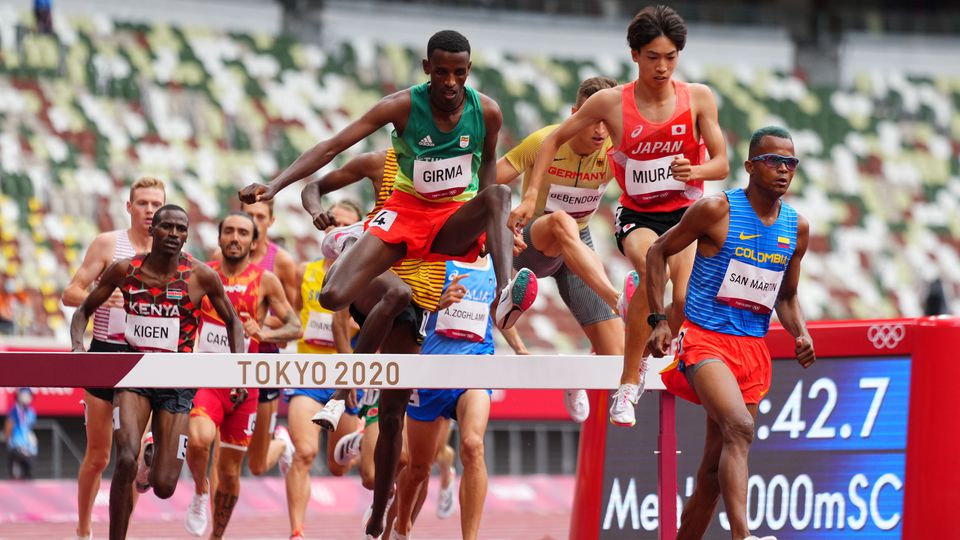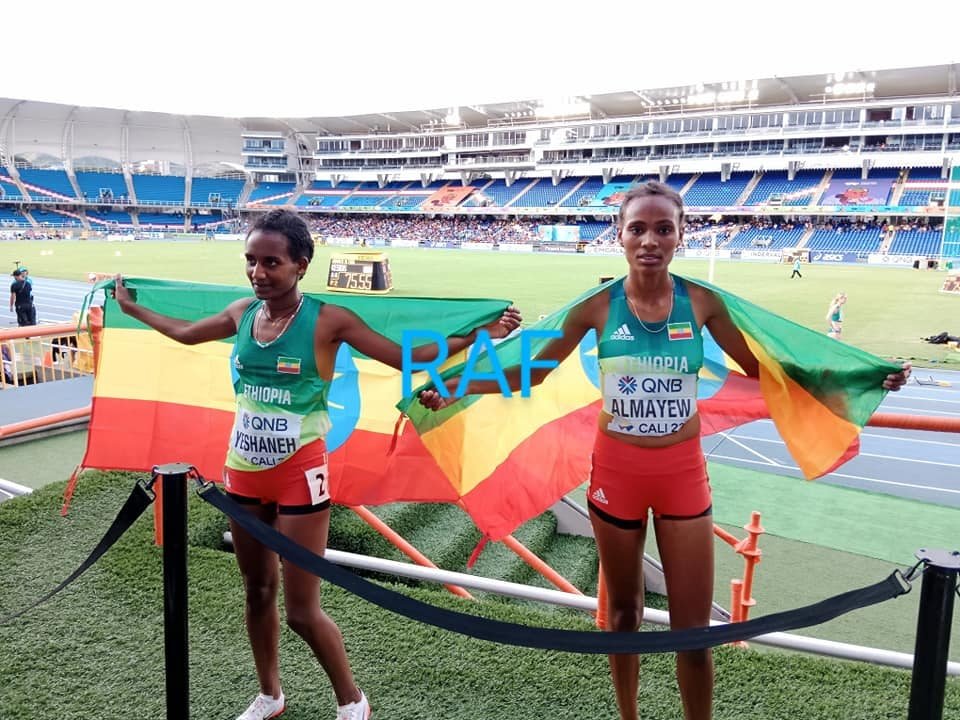Historical Significance of Ethiopian Steeplechase

The dominance of Ethiopian athletes in the steeplechase is a testament to the country’s rich athletic history, cultural influences, and unique geographical landscape. Their success story has evolved over decades, culminating in an unparalleled level of achievement on the global stage.
Evolution of Ethiopian Steeplechase Dominance
The rise of Ethiopian steeplechase dominance can be traced back to the 1980s, with the emergence of athletes like Getaneh Tessema and Haile Gebrselassie. These pioneers established a foundation for future generations, showcasing the potential of Ethiopian runners in this demanding discipline. Their successes sparked a wave of interest in the steeplechase within the country, leading to the development of a strong training infrastructure and a pool of talented athletes.
The early 2000s witnessed a surge in Ethiopian steeplechase success, with athletes like Saif Saaeed Shaheen (formerly known as Stephen Cherono) and Ezekiel Kemboi establishing themselves as formidable competitors. Shaheen, born in Kenya, but later naturalized as a Qatari citizen, dominated the event for several years, while Kemboi, a Kenyan athlete, became a multiple world champion, highlighting the intense rivalry and high standards in the steeplechase.
However, the 2010s saw a remarkable shift in the landscape. Ethiopian athletes like Conseslus Kipruto, Brimin Kipruto, and Abraham Kibiwot consistently claimed top positions at major championships, demonstrating the country’s unwavering dominance. Their achievements solidified Ethiopia’s position as the powerhouse of steeplechase, leaving an indelible mark on the history of the event.
Role of Cultural and Environmental Factors
The success of Ethiopian steeplechase athletes is deeply rooted in cultural and environmental factors. The country’s rugged terrain, characterized by high altitudes and undulating landscapes, provides a natural training ground for endurance athletes. The harsh environment fosters resilience and strengthens the cardiovascular system, attributes that are crucial for success in the steeplechase.
“The Ethiopian athletes have a natural advantage due to their high-altitude training. They are used to running in thin air, which makes them more efficient at using oxygen.” – Dr. David Martin, Sports Scientist
Furthermore, Ethiopian culture places a high value on athleticism and endurance. Running is deeply ingrained in the society, with many individuals engaging in long-distance running as a part of their daily lives. This cultural emphasis on running, coupled with the natural environment, has created a fertile ground for the development of world-class steeplechase athletes.
Influence of Prominent Ethiopian Steeplechase Athletes
The success of prominent Ethiopian steeplechase athletes has had a profound impact on the sport, inspiring generations of young athletes and shaping the future of the event.
- Conseslus Kipruto: The Kenyan-born Ethiopian athlete, Kipruto, is widely regarded as one of the greatest steeplechasers of all time. He dominated the event for over a decade, winning multiple world championships and Olympic gold medals. His achievements have inspired countless young athletes in Ethiopia and beyond, demonstrating the potential for excellence in the steeplechase.
- Brimin Kipruto: Another Kenyan-born Ethiopian athlete, Brimin Kipruto, is a two-time world champion and Olympic silver medalist. His consistency and competitive spirit have made him a formidable force in the steeplechase, inspiring young athletes to strive for greatness.
- Abraham Kibiwot: Kibiwot is a rising star in the Ethiopian steeplechase scene, having won the world championship in 2019. His youthful exuberance and impressive performances have captivated audiences worldwide, pointing towards a bright future for Ethiopian steeplechase.
These athletes have not only achieved individual glory but have also played a crucial role in elevating the profile of Ethiopian steeplechase on the global stage. Their success has spurred the development of a strong training infrastructure and a culture of excellence within the country, ensuring the continuation of Ethiopian dominance in the steeplechase for years to come.
Training and Techniques: Ethiopian Steeplechase

The success of Ethiopian steeplechase runners is not merely a product of natural talent; it is deeply intertwined with their rigorous training regimes and the unique approaches they adopt. Their training methods are characterized by a combination of high-intensity workouts, endurance-building exercises, and a focus on specific technical aspects of the steeplechase.
Training Methods
Ethiopian steeplechase runners typically follow a training program that emphasizes high-volume training, with long runs, interval training, and hill workouts forming the core of their regimen. These workouts are designed to enhance their aerobic capacity and build their endurance.
- High-Altitude Training: Many Ethiopian athletes train at high altitudes, which helps to increase their red blood cell count and improve their oxygen-carrying capacity. This adaptation is crucial for success in endurance events like the steeplechase.
- Strength and Conditioning: Strength training plays a vital role in developing the power and explosiveness required for the water jump and the final sprint. Ethiopian runners incorporate exercises that target their core, legs, and upper body.
- Specificity Training: Ethiopian coaches emphasize training that mimics the demands of the steeplechase. This includes practicing water jumps, running over barriers, and incorporating specific drills that enhance their coordination and agility.
Running Styles
Ethiopian steeplechase athletes are known for their distinctive running styles. These styles are characterized by their long strides, efficient biomechanics, and a focus on maintaining a consistent pace.
- Economy of Movement: Ethiopian runners are renowned for their efficient stride patterns, minimizing unnecessary energy expenditure. Their long strides and smooth arm movements contribute to their exceptional endurance.
- Water Jump Technique: Ethiopian runners often utilize a technique where they clear the water jump with a powerful push-off and a high knee lift. This technique allows them to maintain their momentum and avoid losing valuable time.
- Barrier Clearance: Ethiopian athletes typically approach barriers with a measured stride, clearing them with a smooth and controlled motion. Their technique allows them to maintain their rhythm and minimize disruption to their pace.
Technical Aspects
Ethiopian steeplechase runners excel in several technical aspects of the event, contributing significantly to their success.
- Water Jump: Ethiopian runners are renowned for their mastery of the water jump. They consistently demonstrate a combination of speed, power, and precision in clearing the obstacle, minimizing the impact on their overall pace.
- Barrier Clearance: Ethiopian runners exhibit exceptional efficiency in clearing the barriers. Their smooth and controlled technique allows them to maintain their rhythm and momentum, minimizing time loss.
- Pace Strategy: Ethiopian runners often adopt a strategic pacing approach, focusing on maintaining a consistent pace throughout the race. This allows them to conserve energy and make a strong finishing kick.
Global Impact and Legacy

The dominance of Ethiopian steeplechase athletes has not only transformed the landscape of the sport but has also profoundly influenced its global perception. Their success has inspired generations of runners, fostered a culture of excellence, and elevated the steeplechase to new heights of athletic achievement.
Key Events and Victories
The remarkable achievements of Ethiopian steeplechase runners have been marked by a series of pivotal events and victories that have solidified their dominance. These events have served as milestones in the evolution of the sport, demonstrating the extraordinary talent and resilience of Ethiopian athletes.
- 1996 Atlanta Olympics: The first Olympic gold medal in the steeplechase for Ethiopia was won by Haile Gebrselassie. This victory marked the beginning of an era of Ethiopian dominance in the event, setting the stage for future generations of runners to follow in his footsteps.
- 2008 Beijing Olympics: Brimin Kipruto became the first Kenyan to win the Olympic steeplechase gold since 1988, breaking a long-standing Ethiopian dominance in the event. This victory demonstrated the growing competitiveness in the steeplechase, but Ethiopia still remained a force to be reckoned with.
- 2012 London Olympics: Ezekiel Kemboi of Kenya successfully defended his title, becoming the first athlete to win two consecutive Olympic steeplechase gold medals since the 1970s. However, Ethiopian runners continued to perform at a high level, with Getaneh Moleke winning the bronze medal.
- 2016 Rio Olympics: Conseslus Kipruto of Kenya won the gold medal, showcasing the rise of Kenyan dominance in the steeplechase. However, Ethiopian runners continued to be competitive, with Evan Jager of the United States winning the silver medal.
Future Prospects, Ethiopian steeplechase
Ethiopian steeplechase runners continue to demonstrate their potential to maintain their legacy. The country has a rich pool of talent, with young athletes consistently breaking records and emerging as contenders on the global stage. The focus on rigorous training programs, innovative coaching methods, and a culture of dedication has laid a strong foundation for future success. The commitment to excellence, coupled with the natural talent and athleticism of Ethiopian runners, suggests that the future of Ethiopian steeplechase remains bright.
Ethiopian steeplechasers are known for their incredible endurance and speed, making them formidable competitors on the international stage. However, the event is not without its risks, as evidenced by the men’s steeplechase fall that can occur due to the high-speed water jumps and the potential for fatigue-induced errors.
Despite these challenges, Ethiopian athletes continue to dominate the steeplechase, showcasing their remarkable athleticism and resilience.
Ethiopian steeplechase runners are renowned for their endurance and tactical prowess, often dominating the international stage. However, the demanding nature of the event, with its water jumps and barriers, carries inherent risks. Understanding these risks is crucial, especially after witnessing the men’s steeplechase falls that have occurred in recent years.
While the Ethiopian athletes are known for their resilience, ensuring their safety remains paramount, as their continued success relies on minimizing the potential for injury.